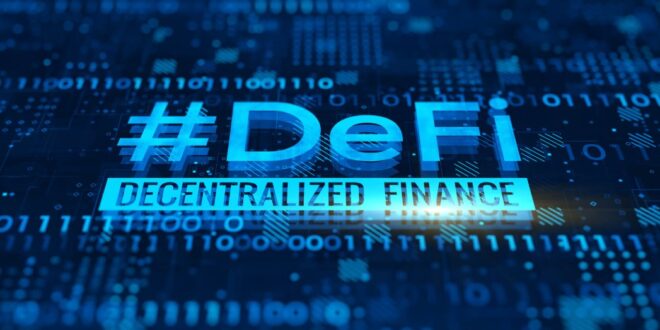Decentralized Finance (DeFi) revolutionizes traditional financial systems by leveraging blockchain technology to offer inclusive and transparent financial services. In DeFi, users interact directly with decentralized platforms, bypassing intermediaries like banks.
These platforms enable a wide range of financial activities, including borrowing, lending, trading, and earning interest, all within a decentralized ecosystem. For example, NYALA emerges as a prominent platform for asset tokenization within the DeFi landscape, facilitating the conversion of physical assets into digital tokens securely recorded on the blockchain.
As DeFi continues to evolve, it promises to democratize access to financial services and reshape the future of finance.
Decentralized Exchanges (DEXs)
Decentralized Exchanges (DEXs) represent a cornerstone of decentralized finance (DeFi), offering users a trustless and secure platform to trade cryptocurrencies directly without the need for intermediaries.
Unlike traditional centralized exchanges, DEXs operate on blockchain networks, allowing users to retain control of their funds throughout the trading process. Platforms like Uniswap and PancakeSwap enable peer-to-peer transactions through automated market-making mechanisms and liquidity pools.
By providing seamless and permissionless access to cryptocurrency trading, DEXs contribute to the democratization of finance and the empowerment of individuals in the decentralized ecosystem. Their growing popularity underscores the transformative potential of decentralized exchanges in the financial landscape.

Lending and Borrowing Protocols
Lending and borrowing protocols in decentralized finance (DeFi) empower users to lend or borrow digital assets without relying on traditional financial institutions. Platforms like Compound and Aave facilitate these transactions through smart contracts, ensuring transparency and efficiency.
Users can earn interest by lending their assets or access liquidity by borrowing against their holdings. These protocols operate autonomously, eliminating the need for intermediaries and allowing for seamless peer-to-peer lending and borrowing.
Asset Tokenization
Asset tokenization is a process where physical assets, such as real estate or art, are converted into digital tokens on blockchain platforms like NYALA. This enables fractional ownership, increased liquidity, and broader accessibility to previously illiquid assets. Through asset tokenization, investors can diversify their portfolios and participate in new investment opportunities with reduced barriers to entry.
Security and Transparency in DeFi
Security and transparency are fundamental principles of DeFi, ensuring the integrity and trustworthiness of decentralized financial platforms. Smart contracts govern transactions on DeFi protocols, minimizing the risk of fraud or manipulation.
Additionally, DeFi operates on transparent, open-source platforms, allowing users to verify transactions and inspect code for vulnerabilities. This commitment to security and transparency enhances user trust and confidence in DeFi platforms, fostering greater adoption and participation in the decentralized ecosystem.

Summary
Decentralized Finance (DeFi) represents a seismic shift in financial paradigms, leveraging blockchain technology to democratize financial services globally. By eliminating intermediaries, DeFi platforms offer users direct access to a myriad of financial activities, from borrowing and lending to trading and earning interest.
NYALA’s emergence as a leading platform for asset tokenization underscores DeFi’s potential to transform traditional investment models. As DeFi evolves, it holds the promise of fostering financial inclusivity and transparency, empowering individuals worldwide to participate in the global economy.
With its disruptive potential, DeFi is poised to redefine the future of finance, driving innovation and accessibility in unprecedented ways.
 Hi Boox Popular Magazine 2025
Hi Boox Popular Magazine 2025



